Hosta "Wide Brim": description, planting, care and reproduction
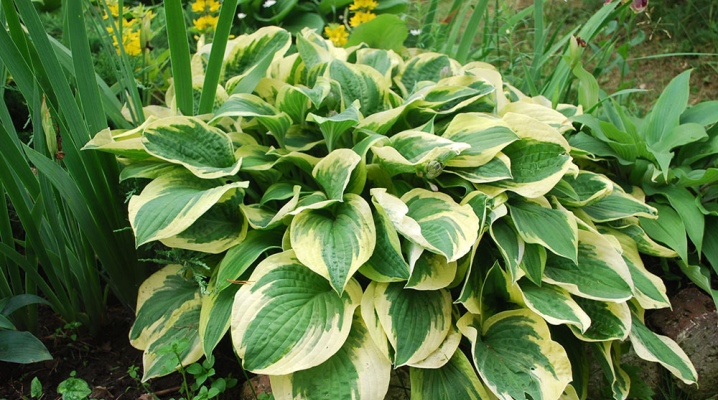
The habitat of most of the ornamental plants of the Hosta Wide Brim species is East Asia. At the beginning of the nineteenth century, hosta spread throughout the world and is currently of interest to many gardeners. The reason for this is an attractive appearance that can decorate any flower bed.
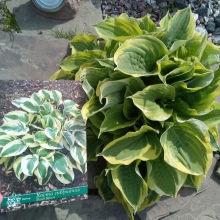

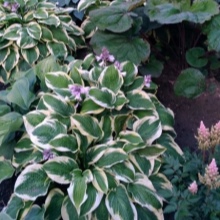
Botanical description
Wide Brim is a compact, medium-sized perennial shrub with beautiful leaves and abundant flowering. The hybrid hosta was bred in 1979 thanks to the efforts of Dutch breeders. The plant is widely used to decorate garden areas. It is popular because of its decorative appearance and unpretentiousness.
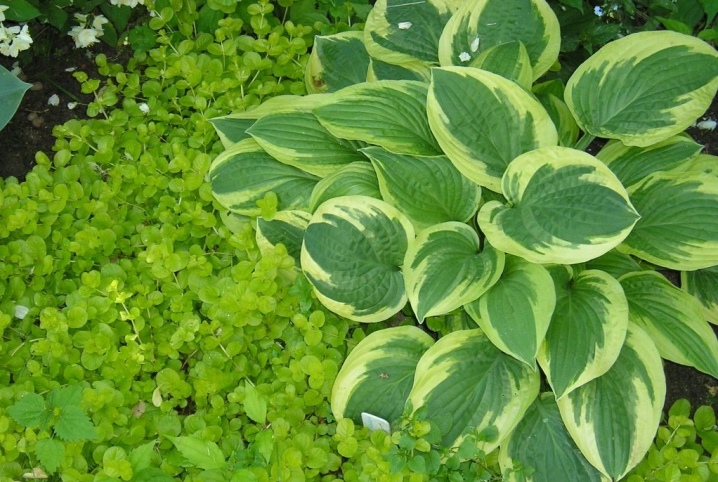
Culture has its own characteristics.
- The host grows to a height of 60 cm with a bush circumference of 70–90 cm.
- The crown of the plant is dense and dense, characterized by rapid growth.
- The size of the leaves is 16X21 cm, the leaf plates are heart-shaped. The surface with characteristic grooves is light green, decorated with golden edging.
- The flowering culture begins in July and lasts until September.
- The drooping bell-shaped flowers with a pleasant specific aroma are collected in inflorescences resembling brushes. They are located on a tall, straight stem.
- The flower petals have a delicate pale lilac color.
Scope - gardening of lawns, decoration of the club and flower beds, alpine slides, framing garden paths and artificial reservoirs.
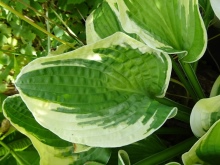
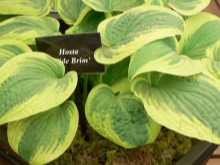

Landing features
When choosing a shrub for planting in your garden, you should know that host "Wide Brim" grows well in both lighted and shaded areas.
An indispensable condition is the absence of drafts and protection from the wind.
You can plant the plant next to fruit trees that can protect the host from the sun's rays with their shade. Hosta Wide Brim loves loose, drained soils with an acidified composition. In order for the shrub to develop well, the earth in the trunk circle should not dry out. An increased amount of moisture is necessary for the plant during the formation of inflorescences. In addition, the size of the leaves depends on the moisture content. The darkening of their tips can serve as a signal for urgent watering.
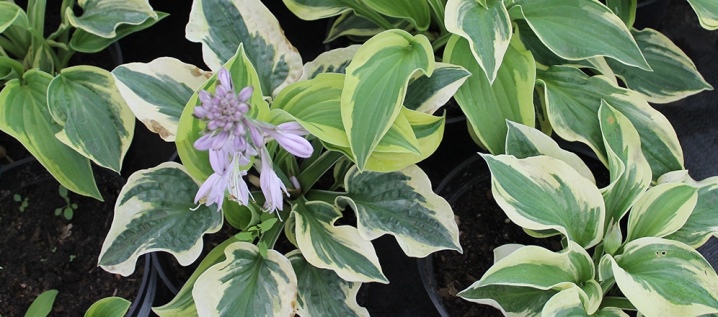
Landing rules provide for:
- placement of 3-5 bushes per 1 m 2;
- before planting, it is necessary to carefully dig up the earth, remove weeds, acidify the soil, if it is neutral;
- the soil must be enriched with fertile garden or leafy soil;
- the planting of hosta seedlings - grown seedlings - is carried out at the beginning of September;
- between the pits corresponding to the size of the roots, a distance of 50 cm is maintained;
- after laying the drainage layer, mineral fertilizers and organic matter are added.
Completing the planting, the soil is generously watered, the trunk space is mulched with wood chips.

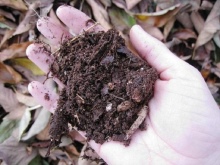
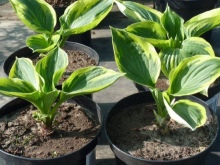
Culture care
Young plants need attention regular agrotechnical work will be required to ensure their adaptation.
- Water the bushes early in the morning, making sure that the topsoil does not dry out. However, it is important that the water does not stagnate: this leads to damage to the root system. An indicator of a lack of moisture can be the drooping of branches and leaves, their laying on the ground.
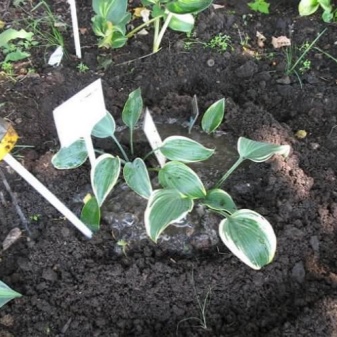
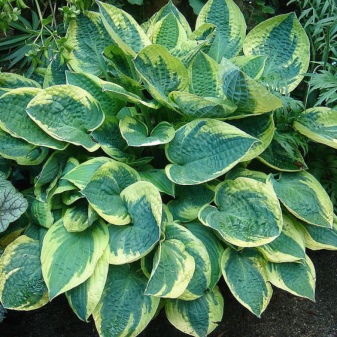
- If the soil is depleted, and no additional portions of humus were added to it before planting, additional feeding is necessary. Fresh organic substances are not introduced, since they can cause burns, only rotted manure and compost are used.And also formulations intended for decorative deciduous perennial crops are applicable. Watering the soil with a solution of the preparations "Ideal", "Biohumus" has a beneficial effect on the growth and flowering of hosts. This should be done during the formation of flowers, and 2 more times during the growing season of the plant.
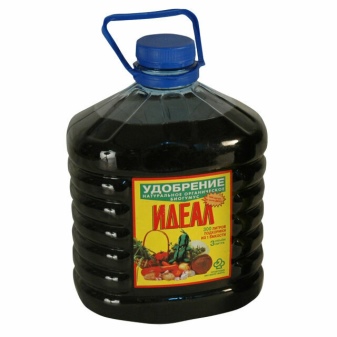

- Weeding and loosening are carried out as needed, maintaining the looseness necessary for the moisture and air permeability of the earth.
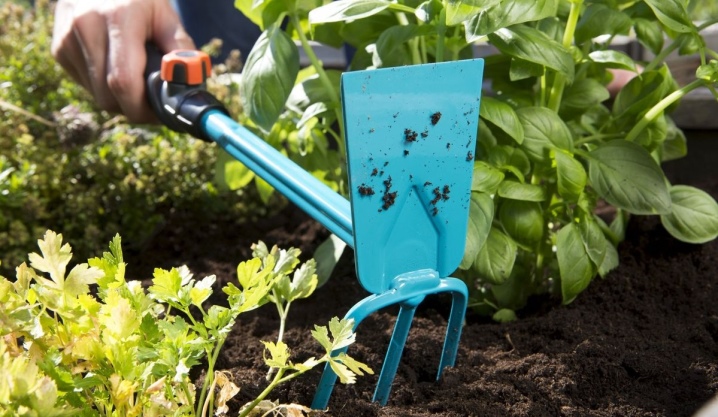
- In autumn, hosts are pruned. This can be done after the bells have faded. It is necessary to cut off part of the peduncles with flowers, and completely cut off the later dried remnants closer to winter. This procedure is also permissible in spring, when damaged and blackened leaves are removed at the same time - you do not need to touch them in autumn.

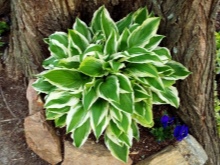
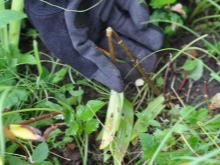
- The Wide Brim host should be transplanted in the fall. The shrub is pre-abundantly irrigated to make it easier to extract. When transplanting, potassium sulfate, "Superphosphate" and saltpeter (15–20 g) are placed in the planting pit. If a cut is placed, then the depth for it is the same as for the original plant. After that, the soil is mulched with peat and watered every 3 days.
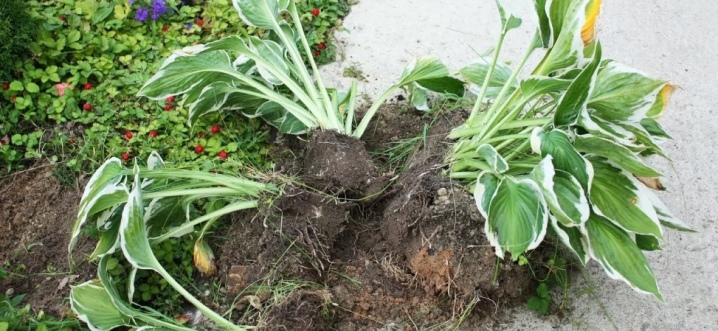
- For the winter period, the culture, as a rule, is not covered with anything, but the trunk circle is carefully covered with mulch.
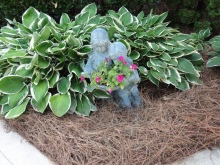
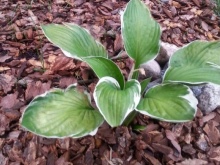
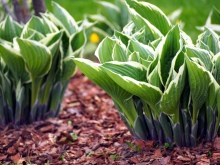
Reproduction methods
Due to the peculiar color, the original hosta bushes are always popular among gardeners. The demand for this crop is also high because usually there are no problems with its cultivation. For breeding, you can use ready-made planting material, but also use already growing shrubs. The vegetative method is the most preferable, it makes it possible to get large and well-flowering plants. True, for this you have to be patient, since the crown is growing within 1–2 years.
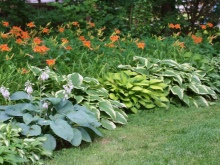
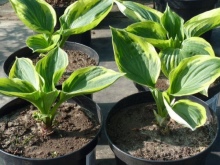
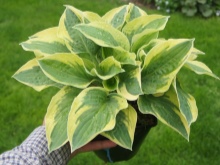
You can divide the hosts: they throw away daughter shoots every 2 years, but it is better to do this every 4–5 years, starting from the age of 3 years of culture.
A good cut should have at least 3 outlets, and if many seedlings are not required, the mother plant is not dug out, carefully separating the shoot from it with a sharp shovel.
Cuttings are harvested from May to June, when the growing season is active, and the leaves have already grown, and they take well-separated, ripe shoots with a "heel". The leaves are cut by 1/3, then the cuttings are planted in greenhouses before rooting, and only after that they are determined to a permanent place.

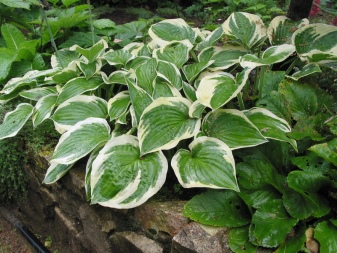
Not the most reliable method of reproduction is seed, since the germination of seedlings is very low. In addition, it is a laborious process involving hardening, treatment with a growth stimulant and the creation of a greenhouse environment that must be maintained constantly for several weeks. Then picking and rearing will take place during the year. Plants are transplanted into open ground only in the second year.
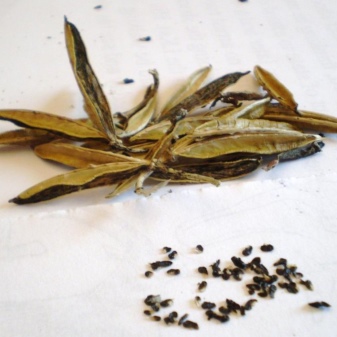
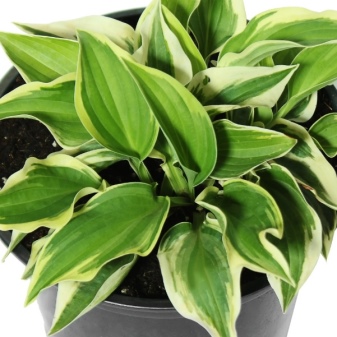
If you first started cultivating hosts, then we advise you to familiarize yourself with the advice of experienced farmers from the following video.







































































































Thank you, very informative and comprehensive.
The comment was sent successfully.